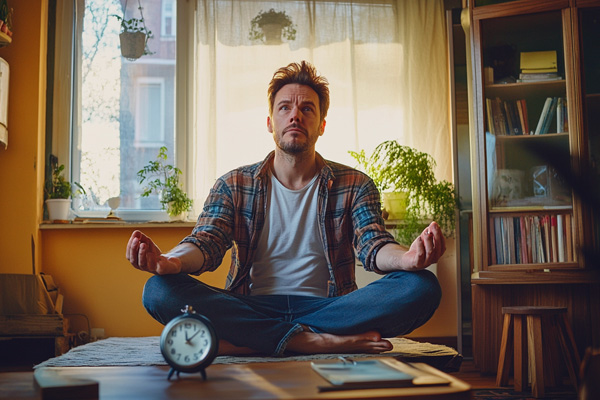Sure, these days everyone has heard about how great meditation can be for you. Great does not, however, describe my early experiences. Despite the lack of public hype years ago, smart people I trusted were recommending it. I watched them grow in their ability to stay in challenging conversations and remain calm when things were falling apart. That didn’t make it any less horrible when I sat down on a pillow to stare at a wall.
I squirmed. I twitched. I obsessed about finding something, anything to do other than this for the full three minutes I tried to sit still. It was so horrendously uncomfortable and, what I then called, “boring”, that I never got around to giving it a second try. Every few years I would sit, squirm, and give up.
For me, meditation didn’t work. It frustrated me and kept me from doing anything at all. Fortunately, I found other steps towards mindfulness that were much more manageable and, for me, enjoyable. When mindfulness seems useful for one of my clients, and meditation seems like a brick wall, I draw from my work with movement and focus training in studies like martial arts and theater.
One Example: Martial Arts
I’ll use martial arts as an example. Many martial arts focus on combat up front and have an unstated mindfulness training that develops throughout the path. When students are young and full of vim, they are given fast repeating movements. These movements can later be slowed. The mind then learns to stay with the body throughout a movement. (Taichi or Qigong are examples of arts that begin with this approach.) The martial arts with this secret end game eventually move into some kind of standing pose and, ultimately, sitting and breathing slowly. Ta da! You’re meditating and… you were secretly doing it all along.
One of my favorite martial arts is a Chinese Kung fu style called Ziranmen or, “Natural Style”. A part of training involves walking slowly in a circle in a low stance. (This is similar to Bagua’s circle walking.) The practitioner moves their hands, arms, legs and feet in a rotating pattern like a slowly turning wheel, synchronized with the breath.
The first time I tried this my teacher walked behind me giving pointers. “Roll the shoulders more.” “Land on the ball of the foot.” I listened for each new instruction, focused intently on each slow movement, completely fixed on coordination and balance. Suddenly, I realized that his voice had stopped. In fact, he was gone. All that was left was a still, light fog over the park in the morning, the sound of my breath, and the slow continuous movement of my body around the circle. A sense of deep peace, simplicity and wholeness arose.
Much later I slowed to a stop and stood still. It was only then that my teacher appeared, walking up from behind me, where he had been moving in perfect unison the whole time.
The beauty of this practice for me, at that stage of my development, was that I felt like I was “doing something”. The physical movement and challenge kept me excited and interested enough that I still do it today. It helped me through tough breakups, prepared me to be a better husband and partner, and it even improved my Kung fu.
My Approach
Without the need to best someone in combat we can still draw from the fundamental mindfulness principles of martial arts and apply them to daily activity. Walking between offices and counting your steps can become a practice. Mopping a floor. A few simple movements in the morning before catching the train. I would even go so far as to suggest that without building a practice that moves in life, meditation alone misses key ingredients. (But this is a topic for another day.)
Of course, the stillness allowed by sitting is extremely powerful in the long run. I find that once my clients reach 20 minutes a day they experience enough direct benefit that it is no longer “homework” and they are eager to keep it up. As a lifetime extrovert and generally high energy human it still blows my mind that I can sit perfectly still for forty minutes a day. But I would never have made it without the help of other practices.
I also want to be clear that you may not currently feel a need for what mindfulness offers in the first place. In the end it comes down to your own sense of what’s right for you. Without understanding how it fits your situation, the lack of motivation would make it nearly impossible to sustain a practice.
You’ll know if and when the time is right.




